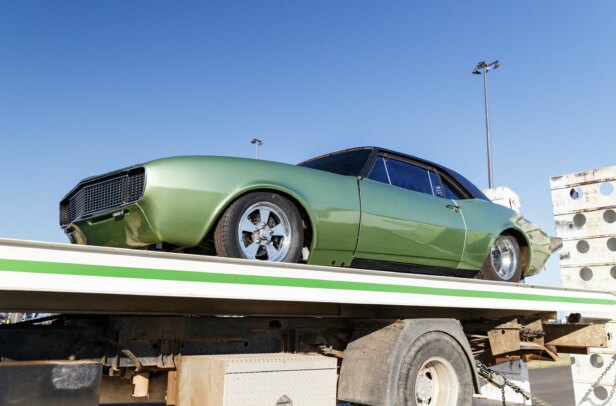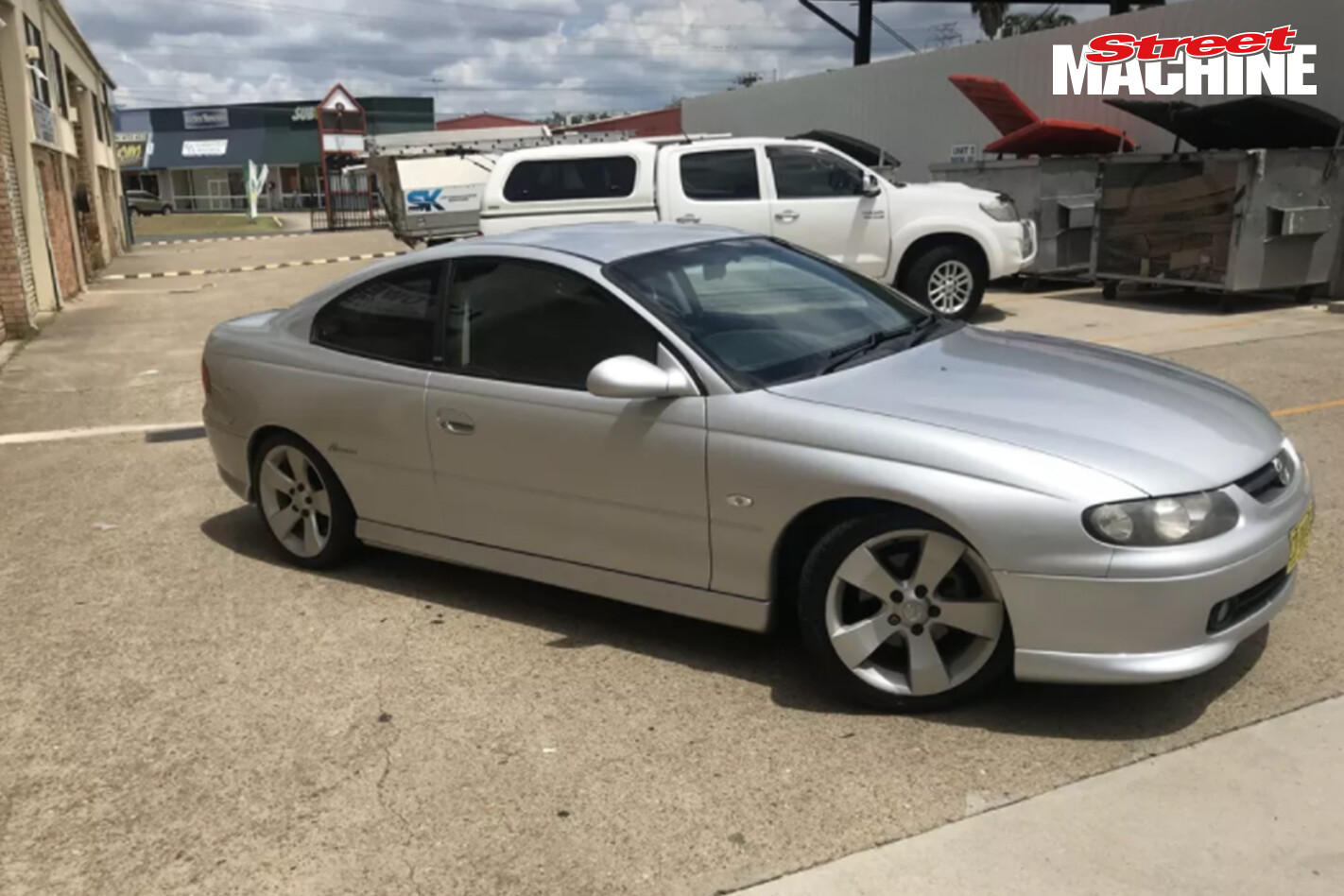LET’S just cut right to the chase: this is really an engine story, not a car yarn, even though the car in question is a damn cool Monaro with monster HSV brakes, GTO rims and slammed suspension. And while we’re aiming for the nub of the matter we’d like to say up front what a storming good engine this is; yep, we like it a lot.
This article was first published in the June 2004 issue of Street Machine
Sure it makes a heap more power than a stock LS1, but it’s not just the power, it’s the way it does it that impresses. Smooth, quiet, torquey and instantly powerful, the feeling you get when you plant the slipper is more European supercar than Aussie dragstrip hero. And that’s two-times Street Machine Summernats Horsepower Heroes winner Rob Vickery’s intention.
While supercharging is the more common method of extracting bolt-on grunt from Holden’s 5.7-litre V8, Vickery — along with new partner Ian Bateman at Amberley Autos in Melbourne — has opted for twin turbo-charging. The prototype Stage 1 version we got to sample around a small racetrack on a hot Canberra day makes a rather convincing argument for the snails.
It also makes 340kW (456hp) at 6000rpm, and 610Nm (450ft/lbs) of torque at 4000rpm. That’s measured at the rear wheels, with a conservative six psi. When you consider that a stock LS1 ‘only’ pumps out 245kW at the flywheel at 5600rpm, and 465Nm at 4000rpm, that’s some serious poke.
But like we said, it’s the way the Amberley Autos upgrade works that has us buzzing. Those familiar with LS1s — even some of HSV’s warmed-up versions — will know that the Chev engine doesn’t really start humming until there’s a fair few revs on board and then it runs out of steam, still shy of the 6000rpm mark.
By using two small Garret 25R ball-bearing turbochargers, which spool up in a trice, the Amberley engine has heaps of mumbo down low, and peak torque is on board by 4000rpm, same as the stocker. But with the Amberley donk there’s no waiting for the action to begin. It’s virtually instant (from 2000rpm) and there’s stacks of throttle sensitivity. Of course, there’s a big muscular shove in the back too when the boost builds, and the short straight at the track was greedily gobbled up in no time. It’s bloody quick!
With Bateman’s experience tuning Nissan GTRs, he and Vickery were quickly able to nut out the basic specification and plumbing for the twin-turbo set-up. In Canberra, Vickery’s car was running adjustable boost — with 10 pounds of boost it made 455kW at the wheels at this year’s Horsepower Heroes — and since then there have been numerous design and installation improvements, nailing down small glitches to create a foolproof package.
The monster Stage 2 kit will be good for around 550kW at the flywheel, but Vickery reckons most blokes will have their hands full with a Stage 1 kit.
“Six pounds is heaps enough for the street,” he says. “You’ll light the tyres up no worries — it’s the biggest sleeper you’ve ever seen.
“But for the guy who wants to go out and drag race, 10 pounds will give him well over 400kW at the wheels.”
Amberley Autos is targeting a slightly older market with its twin-turbo kits and also hopes to eventually export them to the US (for the GTO) and to the Middle East.
“The LS1 market is old enough now that a guy can get in for $25K and that’s a good starting point for this kit,” Vickery says. “Our kit is aimed at someone who wants sophisticated power, a guy who’s got a Statesman and wants to tow his boat and likes a quick car, but still wants comfort. He doesn’t want a lumpy idle or lots of engine noise, just a quiet, smooth car.
Low mount turbos means the Monaro looks virtually stock when the bonnet is pulled. It isn’t
“When we designed the kit we didn’t want anything racy, we didn’t want it to be obtrusive, we wanted it all hidden. I think we met that objective. We haven’t cut up any of the car; there are no modifications to chassis rails or inner guards — that was all part of the brief. We tried to keep it classy and a bit more upmarket. You’ve got grunt when you want it, fuel economy, and we don’t lose traction and cruise controls.
“Anyone who’s driven an LS1 knows it’s got plenty of grunt, but when you drive this car it just brings the LS1 to life. Turbocharging is the future; it’s free power — you’re using waste gases to produce boost and can effectively double the size of your engine by increasing the boost.”
The final pricing of the kit was still being set as this was written, but you can expect it to range from around $10-16,000 depending on what extra options — like brake upgrades and full exhaust systems — you need.
Kit contents (2004)
- Two Garrett GT25R turbos (each good for 450hp)
- Air-to-air intercooler and ducting
- Two Bosch blow-off valves
- High-volume fuel injectors
- Custom intake ducting
- 4-into-1 custom exhaust manifolds
- High-flow catalytic convertors
- Customised engine management upgrade
- Installation, testing and tuning
- Dyno report
- 12-month warranty




Comments